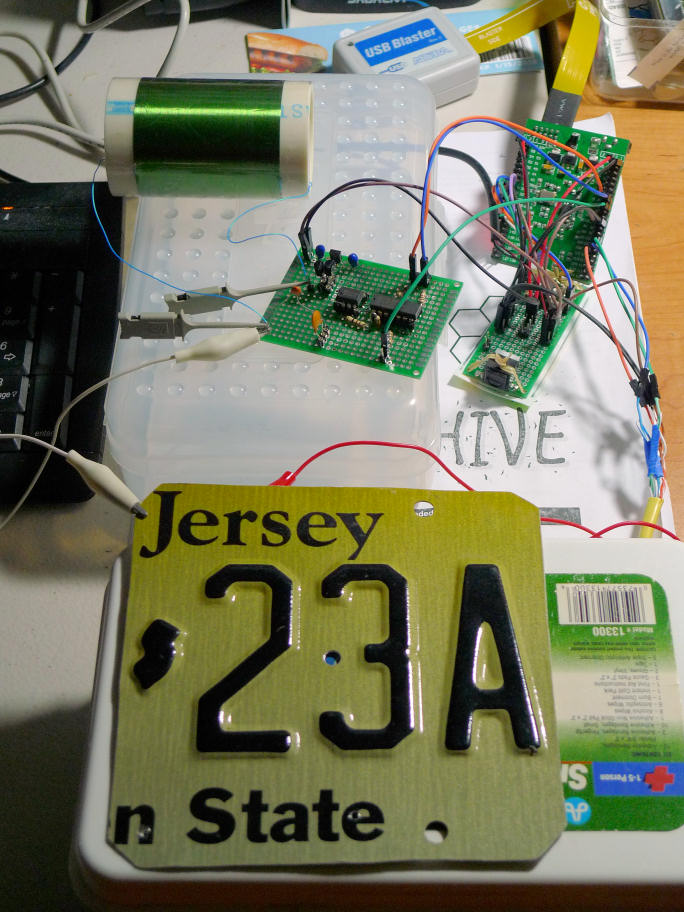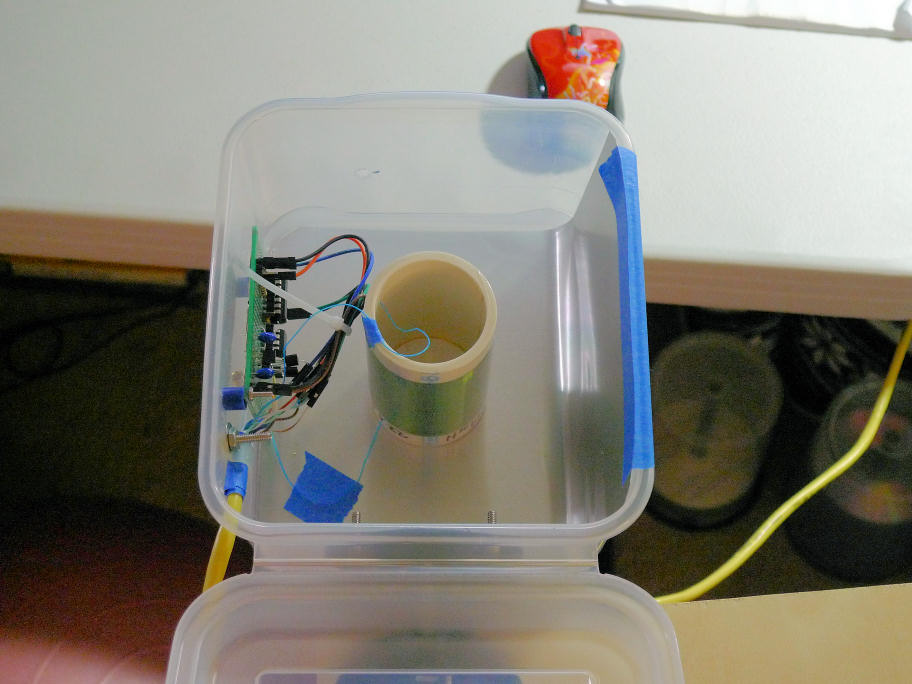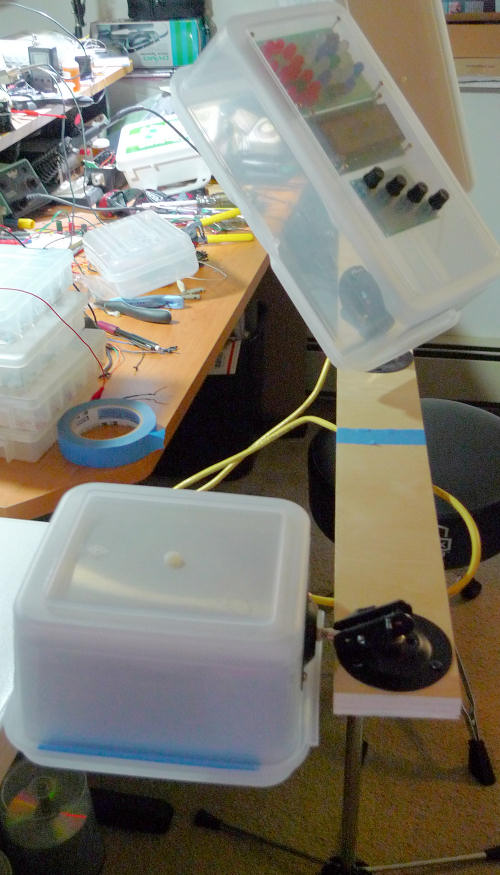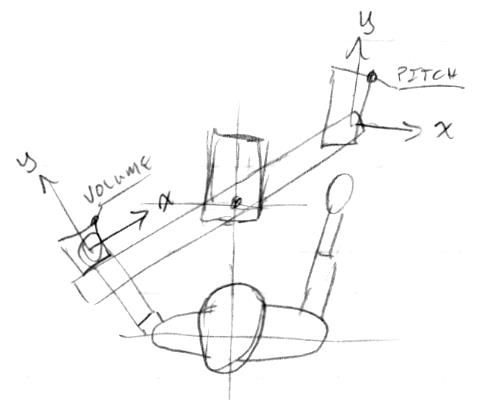Volume Hand 1 or 2 Axes - Player Opinions?
Kind of hard to believe I'm this far into the project before seriously investigating more than one axis on the volume hand - better late than never I suppose. After doodling around in my notebook for a while I rigged up a two coil / two plate arrangement on my workbench, stimulated by a function generator, each plate response on the scope. To get around the need for a third scope channel (someday...) I triggered the scope with the generator TTL output to make an "implied" channel among the data. This scope arrangement actually works pretty nice in terms of showing what's going on.
Not surprisingly, rather low Q (implemented via rather high resistance drive) worked best as it smoothed out the normally sharp phase response. Surprisingly, I had to separate the plates by a foot or more to get decent differential phase response. So this is a dynamic capacitive interaction between the plates rather than the static interaction I thought it might be. I'm not thrilled with low Q, and this separation seems kind of wide, so I'm fundamentally rethinking the volume side. To the point where I just rewired the volume side plate antenna PWB to be single rather than double axis (so it is now a copy of the frequency side board above).
An option for two axes here is to use separate frequencies rather than simple phase separation between them. I looked into this a while back and if the frequencies are different enough the antennas can be right next to each other without noticeable interference. But before I go there I'm wondering how "playable" two axes might even be? FredM made his two axis (pitch & volume on one hand) Theremin only to discover it was essentially unplayable. I can imagine trying to vary the volume without disturbing the pitch in this scenario would be an almost impossible task, and Theremins are already difficult enough to play. But having volume and timbre on one hand rather than volume and pitch might be less difficult? Or are three axes just too much to handle? I'm no player, but when I had functional Theremins in the house it was a challenge for me to knock out the simplest thing pitchwise, and doing anything with the volume totally threw that in the crapper. Then again, I'm no player, and maybe the whole two axis (volume and pitch) thing becomes second nature over time.
I'm curious what real players (intermediate to virtuoso) think of the idea of two axes on the left hand?
[EDIT] Sorry, didn't mean to leave anyone that felt like weighing in on this subject out.





